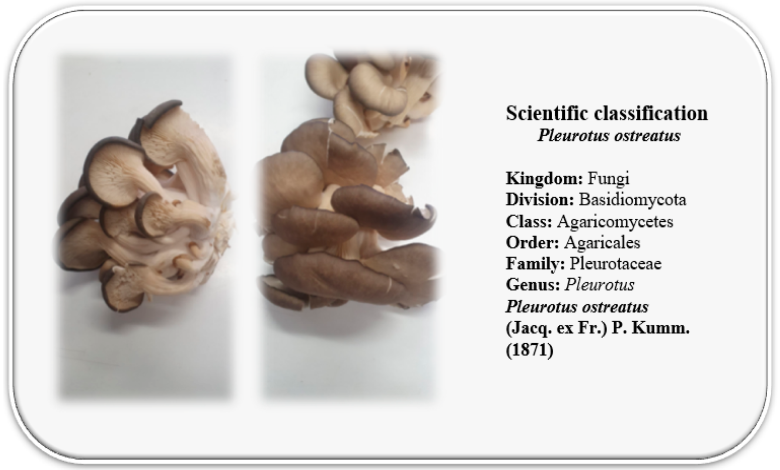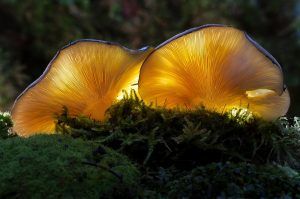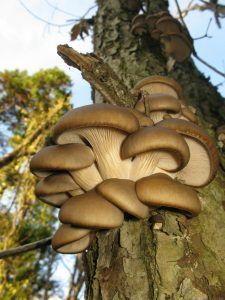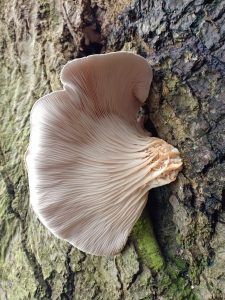The Fungus Pleurotus Ostreatus: [Planting, Care, Irrigation, Substrate]

 Pleurotus ostreatus is a type of mushroom that, within the community in general, is better known as oyster mushroom.
Pleurotus ostreatus is a type of mushroom that, within the community in general, is better known as oyster mushroom.
It is delicious, like the common mushroom, and it has the ability to respond very well to planting indoors, so you will not have to spend money buying it.
For a correct reproduction of the mycelium, it is necessary that the environment has the appropriate conditions of light, humidity and temperature.
So in this article we are going to explain how to grow Pleurotus ostreatus in your home/garden/orchard and enjoy it
Important points when planting Pleurotus Ostreatus
- When? During the winter.
- Where? In a room in the house.
- How do we prepare the land? With previously sterilized cereal straw.
- How should we water? Irrigation is not applied, but rather a bed of moist soil where the bag with the substrate is placed.
- How often do you have to water? Environmental sprays twice a day to maintain the humidity of the space.
- What pests and diseases does it have? Contamination by microorganisms in any of the work phases.
Characteristics of Pleurotus ostreatus
 Pleurotus ostreatus, is the oyster mushroom, and is a fairly common edible mushroom.
Pleurotus ostreatus, is the oyster mushroom, and is a fairly common edible mushroom.
It was first cultivated in Germany as a survival measure during World War I and is now grown commercially throughout the world for food. It is related to the king oyster mushroom, which is cultivated in a similar way.
Oyster mushrooms can also be used industrially for medicinal purposes.
The oyster mushroom is one of the most sought after wild mushrooms, although it can also be grown on straw and other media. It has the bittersweet aroma of benzaldehyde (which is also characteristic of bitter almonds).
Pleurotus ostreatus has a broad, fan-shaped or oyster-shaped cap that spans 5-25 cm; natural specimens range from white to gray or tan to dark brown; the margin is rolled up when young, smooth and often somewhat lobed or wavy.
The flesh is white, firm, and varies in thickness due to the arrangement of the stylets.
The gills of the fungus are white to cream in color, and run down the stem if present. If so, the stem is off center with a side joint to the wood. The mushroom’s spore print is white to lilac -grey, and is best seen against a dark background. The stylet of the seta is often absent. When it is present, it is short and thick.
Omphalotus nidiformis is a toxic analog found in Australia and Japan. In North America, Omphalotus olivascens, the western lantern mushroom, and Clitocybe dealbata, the ivory funnel mushroom, both bear a resemblance to Pleurotus ostreatus. Both Omphalotus olivascens and Clitocybe dealbata contain muscarine and are toxic.
When to sow Pleurotus ostreatus?
Mid to late winter as this is the time mushroom harvesting is at its highest.
Where to plant Pleurotus ostreatus?
The ideal place to advance in the sowing of the pleurotus ostreatus is a room in the house where there are no draughts, but there is adequate lighting.
As for the substrate, there are many options. The ideal is cereal straw, sawdust or vegetable waste can also be used.
How to prepare the land?
 One of the most important issues when cultivating this species has to do with contamination with other microorganisms.
One of the most important issues when cultivating this species has to do with contamination with other microorganisms.
Therefore, the preparation of the substrate (not soil itself) includes a sterilization of the straw by boiling it in hot water.
After it has gone through this process, it is necessary to let it cool, until it reaches about 25º C and cools off.
For all this, the work implements must also be disinfected and sterilized.
How do we water Pleurotus ostreatus?
Irrigation in this case is not necessary because it could cause damage to the structure of the mushrooms.
What is recommended is to place each production rectangle on a base with moist soil to ensure an optimal level of humidity.
How often do we water?
In this case, what is recommended is to carry out environmental spraying twice a day, so that the relative humidity of the environment is maintained.
However, directly watering the mushrooms is not advisable.
How to sow the pleurotus ostreatus step by step?
Planting this type of fungus could be considered one of the most complex due to the number of steps that must be followed to be successful.
However, when all of them are carried out diligently and in appropriate conditions to avoid contamination, a good harvest is assured.
The steps to follow are described below:
- Collect the spores. This process is carried out from the cap of the fungus, placing it on a surface covered with absorbent paper to collect moisture. The hat must be fully mature for this phase to be successful.
- Line the hat with a glass jar. This phase will prevent the spores that are released from the hat from being dragged by the action of the wind, so it is also better to work in a space without currents.
- Prepares the substrate for spore incubation. What is necessary is to work with glass jars that have been previously sterilized and some cereal that contains carbon (such as rice or wheat) that will soften for about 45 minutes of cooking. Before attaching it to the spores, everything must be at room temperature.
- Put the cereal and the spores in the jars and seal the container with a thick layer of cotton. It is important to allow the environment to remain moist and also with the presence of oxygen, which is why cotton is used to close it and not an airtight lid.
- Prepare the bags to create a kind of alpacas. This will be achieved by mixing the incubated spores with the cereal straw (or the chosen substrate) and placing the content in garbage bags, so that they remain as sorts of rectangles or boxes.
- Place the bags in an environment with a constant temperature around 14º C and where the relative humidity is 80%.
- Pierce the bags with holes about three centimeters in diameter, which is where the mushrooms will come out at the time of their formation. Depending on the size of the rectangle, you can make more or fewer holes, but make sure that they are not too close together.
What care does the Pleurotus ostreatus need?
- The greatest care has to do with temperatures, since it is necessary that these do not exceed 14º C nor are they below 10º C.
- Another important detail is ventilation. It is logical because at the wild level the species does not develop in a confinement space.
- Of course, care must be taken that this ventilation is not excessive and, above all, be careful with changes in temperature and air currents .
- Finally, there is the issue of light , which must be at least 8 hours each day, up to a maximum of 12 hours.
- If the conditions of the room allow it, this light can be natural, but work with artificial using a fluorescent lamp.
What pests and diseases affect you?
Pleurotus ostreatus is not usually affected by pests or diseases in general.
What does frequently happen is that the production of the fungi does not occur because the spores were contaminated with microorganisms in some of the work phases.
In the event that this eventuality does not occur, it will even be possible to collect the first harvest and create new holes for more mushrooms.
If the whole work process seems excessive, it is also possible to find the prepared bags in commercial sales.
And since they are so delicious and easy to eat, we will have a good amount available so that the kitchen recipes are in style.

![Photo of How to Grow Medicinal Herbs: [Complete Guide and Types]](https://www.complete-gardening.com/wp-content/uploads/2022/08/how-to-grow-medicinal-herbs-complete-guide-and-types-334x220.jpg)

![Photo of Elephant Garlic: [Characteristics, Care, Planting and Reproduction]](https://www.complete-gardening.com/wp-content/uploads/2022/08/elephant-garlic-characteristics-care-planting-and-reproduction-390x220.jpg)
![Photo of Prune a Carob Tree: [Importance, Time, Considerations and Steps]](https://www.complete-gardening.com/wp-content/uploads/2022/08/prune-a-carob-tree-importance-time-considerations-and-steps-390x220.jpg)